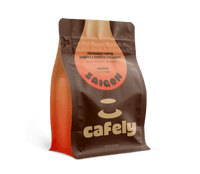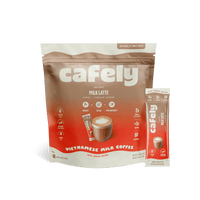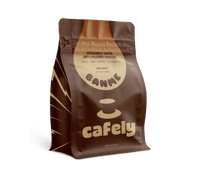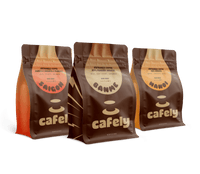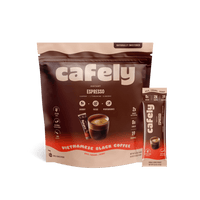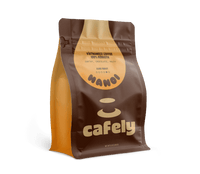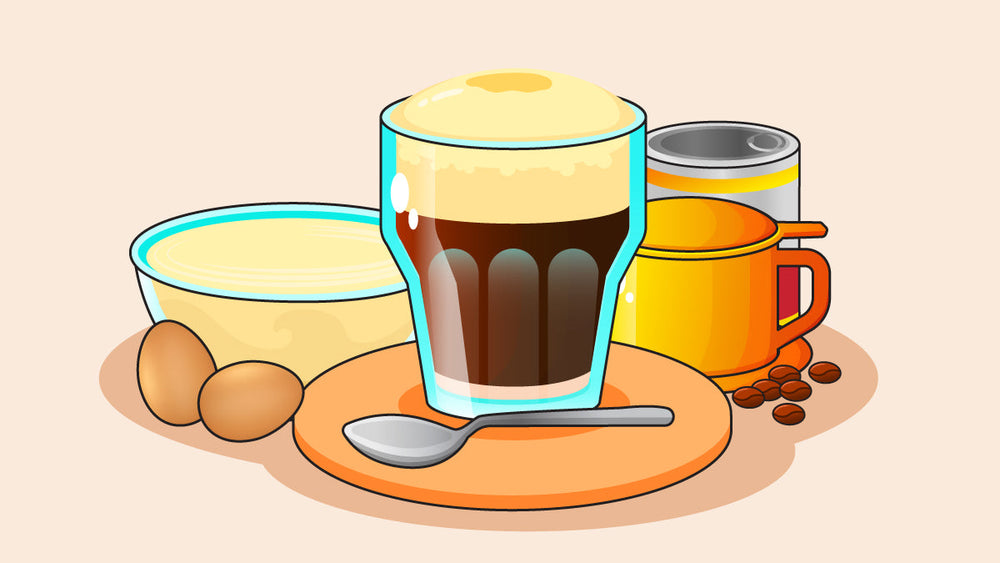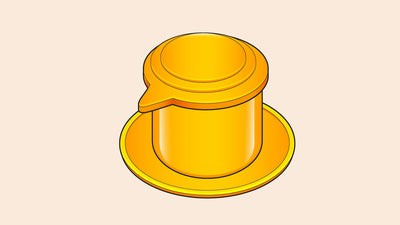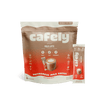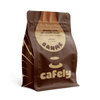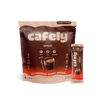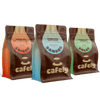Vietnam is renowned for its originality when it comes to drinks, and egg coffee is no exception.
Vietnamese egg coffee is prepared using egg yolks, sugar, condensed milk, and dark-roasted robusta coffee brewed with a phin filter.
The addition of egg yolk might make you skeptical, but yolks are a necessary part of many wonderful desserts — pudding, custard, and ice cream are a few examples.
This guide will walk you through the steps so you can make this traditional drink at home.
How to Prepare Cà Phê Trứng (Egg Coffee)
While it might sound strange to the average Westerner, the richness of the egg yolk perfectly complements the bitter coffee and sweetened condensed milk — whisking the mixture gives it the consistency of frothed milk.
Besides giving food and drink a creamy texture, egg yolks have a high nutritional content — they’re packed with proteins and healthy fats.
Coffee is only as good as the ingredients you use to make it, so here are a few tips on how to take your cup of Vietnamese egg coffee from “okay” to “exceptional.”
You’ll need the following ingredients in order to make Vietnamese egg coffee that’s strong, smooth, and full of flavor:
- Phin filter — This is the traditional way to brew coffee in Vietnam and produces a strong, flavorful cup of coffee.
- Vietnamese coffee — For best results, use a strong, high-grade robusta, such as our HaNoi, SaiGon, or BanMe blends.
- Sweetened condensed milk — Choose a high-quality sweetened condensed milk; lower-quality milk can give the coffee an oily or off flavor.
- Egg yolks — When whisked with condensed milk, egg yolks form a creamy and delicious latte-style froth.
Ingredients & Supplies: Egg Foam Coffee
Vietnamese egg coffee is a little more intricate than your standard drip coffee maker, but this drink is worth the extra effort.
You’ll need the following ingredients and supplies to make Vietnamese egg coffee:
- Quality ground coffee
- Sweetened condensed milk
- White sugar
- Egg yolks
- Boiling water
- Vietnamese phin filter
- Heat-proof bowl
- Mixing bowl
- Electric beater
- Heat-resistant cup
How to Make Egg Foam

First, you’ll need to prepare the egg foam for your coffee. The process is simple:
Step 1: Separate the Egg Whites From 2 Eggs
The easiest way to separate the yolks from the whites of eggs is to first gently crack the egg in half, then slowly transfer the yok back and forth between each half, allowing the whites to drip down in between each step.
Video: 10 Ways to Separate Egg Whites.
Step 2: Combine Sugar & Condensed Milk
In a mixing bowl, mix 3 tablespoons of sweetened condensed milk and 1 teaspoon of white sugar with your egg yolks. Whisk together until it forms a thick, yellowish foam.
Pro Tip: An electric beater makes this process much easier and forms a perfect microfoam.
How to Brew Vietnamese Coffee
The quantities in this recipe are for brewing a single cup of egg coffee with a standard 4 oz phin (120 mL).
Use 2 tablespoons of coffee (14 grams) per cup; adjust the amount accordingly if you’re using a larger phin filter.
Follow these steps to make Vietnamese egg coffee:
Step 1: Measure & Grind Your Coffee

The ideal grind size depends on the brewing method you’re using. Traditional Vietnamese coffee is brewed with a phin filter, which works best with a medium or medium-fine grind size.
If you're using any of our pre-ground coffee, you can skip this step. Our ground coffees are optimized for use with phin filters.
Step 2: Assemble the Phin Filter

Be sure to read the instructions for brewing with a phin filter if you’ve never used one before.
Place the phin filter plate on top of your heat-resistant mug and put the brew chamber on top.
Step 3: Add Coffee Grounds & Gravity Press

Add the coffee to the brew chamber. Level and tamp down the grounds with the gravity press.
Step 4: Add the Boiling Water

For best results, add your boiling water in two stages:
The Bloom Stage — Add enough boiling water to barely cover the gravity press. Wait approximately 30 seconds before moving on to the next step. This stage allows all the gases to escape to ensure a more even extraction.
The Brewing Stage — After 30 seconds, fill the water just below the brim of the filter and cover it with the lid. Let it sit until no more coffee drips out the bottom of the filter. This should take between 4 and 6 minutes to complete.
Step 5: Pour & Mix With Your Egg Foam

Pour your freshly brewed coffee over ice, and drizzle your delicious egg foam overtop.
We like to use heat-proof glass cup to make this coffee pop. Make sure you stirr before drinking, however.
Your coffee is now ready to drink!
FAQs: Vietnamese Egg Coffee
Check out our FAQs about egg coffee below.
1. Is it safe to drink coffee made with raw egg yolks?
According to the CDC (Center for Disease Control and Prevention), pasteurized eggs are safe to eat raw. Most eggs in the United States go through a pasteurization step to make your eggs safe to eat raw.
Outside the US, eggs may or may not be pasteurized, so it’s a good idea to give your eggs a thorough wash with some gentle dish soap before using it. This will significantly reduce the risk of salmonella, but isn’t a guarantee.
2. Are there other types of egg coffee?
The Vietnamese aren’t alone in adding eggs to their coffee.
Swedish coffee is often made with an entire raw egg and its shell! Indonesian coffee uses raw egg yolk, honey, and condensed milk to create Kopi Telur, and Sri Lankans combine coffee, egg, and brandy—or other types of alcohol—according to preference.
Eggnog coffee is another favorite, although its ingredients include whole milk, heavy cream, whole eggs, and bourbon, so it's not the best choice for anyone counting calories.
3. What does Vietnamese egg coffee taste like?
Vietnamese egg coffee has been described as liquid tiramisu, or liquid coffee candy, and is often likened to desserts. The first thing you’ll notice about egg coffee is its custard-like, velvety texture.
To give it a kick, you can also sprinkle some cocoa powder, shredded coconut, or cinnamon on top. Check out Cafely's Vietnamese coffee products to experience new tastes.
4. How will I know when the egg mixture is ready?

It takes approximately 3–5 minutes of whisking to get the correct texture — but you don’t want to over-whisk it.
One way to check is by dropping a spoonful of the egg foam on top of hot water. If it floats, you know it is ready. If not, whip it for a bit longer.
5. What’s the history of Vietnamese egg coffee?
Egg coffee originated in Vietnam in 1946. During the French war, milk — along with other basic staples — became increasingly scarce.
Nguyen Giang, a clever bartender at the Sofitel Legend Metropole Hotel, tried to find an alternative solution to make creamy, frothy coffee without milk.
Today, the Legend Metropole is still up and running as a 5-star hotel, and the bartender’s drink was so successful that he opened a coffee shop, now run by his son.
Rumor has it that their egg coffee has a secret ingredient that will likely be taken to the grave, so the only way to try it is by visiting Café Giang in Hanoi.
